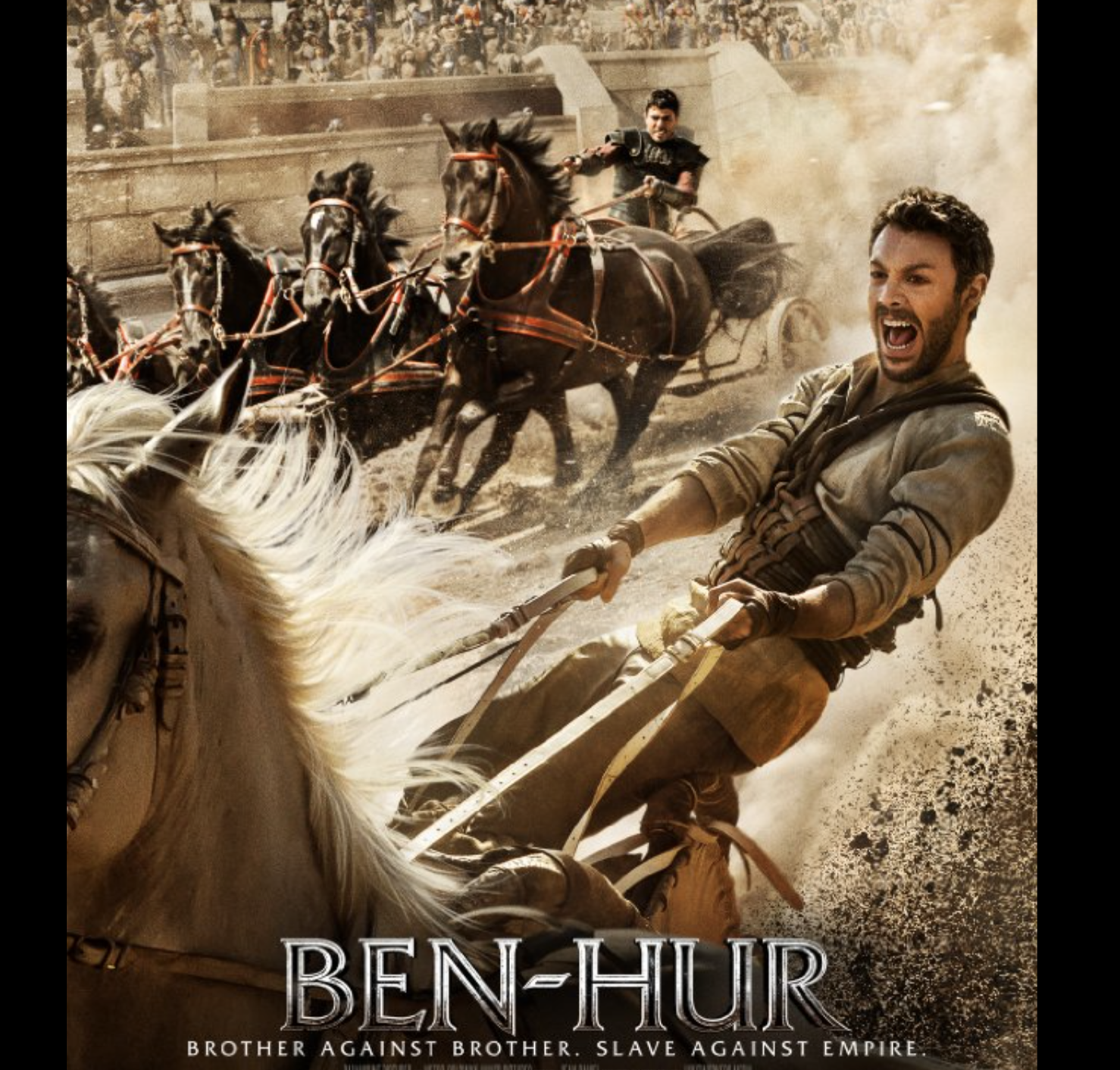Lew Wallace’s 19th-century novel, Ben-Hur: A Tale of the Christ, inspired two silent movies in the early decades of the 20th century and the magnificent 1959 film starring Charlton Heston in the lead role. Almost everyone agrees that Heston was born to play the part, and who can forget the drama and excitement of the chariot race with which the movie comes to its climax?
Roma Downey and Mark Burnett have produced a new instantiation of the story, a streamlined version of the 1959 film. Like its predecessor, this one features a charismatic actor (Jack Huston) as Ben-Hur, plenty of visual grandeur, and yes, a stunning chariot race, depicted this time with the most up to date camera technology and CGI virtuosity. But what principally differentiates it from the Heston Ben-Hur is its greater stress on the strange power of Christ to bring about forgiveness—an emphasis, I must say, much needed in the cultural context of the present moment.
I suppose that most of us know the basic story rather well. Judah Ben-Hur is a Jewish nobleman living with his aristocratic family in an elegant home in Roman-occupied Jerusalem at the time of Christ. Messala is a young Roman whom the family adopted and who has become, effectively, a brother to Judah. In the recent version, Messala pursues a career as a Roman soldier, fighting in some of the most distant outposts of the empire. Upon his return, he reunites with his family, but when it appears that they have been harboring a Zealot opponent of the empire, he turns on them brutally, sending most to prison and sentencing Judah to the hellish life of a Roman galley slave. During five excruciating years chained to oars in imperial ships, Judah cultivates an exquisite hatred for Messala and a passionate desire for revenge. In the wake of a terrible sea-battle, Judah escapes from his chains and he drifts ashore, only to be found by Sheik Ilderim (Morgan Freeman), a wealthy merchant who moonlights as a sponsor of a fine team of chariot horses. After training the former galley slave in the fine art of chariot racing, the Sheik sets Judah up for a confrontation with Messala in the Jerusalem arena.
It is precisely at this climactic point that the major differences between the new film and the Heston version emerge. In both films, of course, Judah manages, after a titanic struggle, to defeat Messala, and in both films, Messala endures a terrible injury. But whereas in the earlier incarnation, the Roman dies, having breathed his last words in anger and frustration, in this film, Judah forgives his brother, and the two embrace once again. Moreover, Messala survives his injuries, and the final scene shows the erstwhile mortal enemies riding together in friendship.
Now what made this reconciliation possible? How is it even imaginable that someone who had been so cruelly mistreated could become friends again with the man who had abused him? If the history of human conflict teaches us anything it is that the lex talionis (eye for an eye and tooth for a tooth), the measured answering of pain with a comparable pain, is actually the best that we can expect. In the normal course of affairs, injustice and violence are, in fact, met with a disproportionately greater injustice and violence. To see these dynamics at work, all you have to do is read the paper or watch the news any day of the week.
So how could the reconciliation of Judah and Messala be anything but sentimentalizing and wish-fulfilling fantasy? It is imperative at this point that we recall that all of the Ben-Hur films are grounded in a book whose subtitle is “A Tale of the Christ.” Even though he is on film for only a few brief scenes, Jesus is indeed the key to the entire drama. Having met Jesus in a fleeting way prior to his exile and enslavement, Judah, upon his return to Jerusalem, is drawn to the site of the crucifixion. He stares up at the crucified Christ who speaks a word of forgiveness even as he is tortured to death. With that Judah grasps something in his heart and releases a stone (evocative of his revenge) which he had been clenching in his hand. He comprehends what stands at the very center of Christianity, namely, the terrible act by which God took upon himself the cruelty, violence, injustice, hatred, and stupidity of the world and, after a bitter struggle, swallowed them up in the ever greater divine mercy. He understood God’s forgiveness of the sins of all of humanity, and he thereby found the grace to become a vehicle of forgiveness to someone who had harmed him so awfully: “Forgive us our trespasses as we forgive those who trespass against us.”
From a purely human standpoint, this sort of forgiveness is impossible; but with God all things are possible. To tell a tale of Christ is to tell a tale of grace. This, I believe, is what Roma Downey and Mark Burnett, who have emerged as two of the more effective evangelists in the world today, wanted us to see in this updated Ben-Hur.

Ben-Hur: A Tale of the Christ, a Tale of Grace
«What principally differentiates it from the Heston Ben-Hur is its greater stress on the strange power of Christ to bring about forgiveness—an emphasis, I must say, much needed in the cultural context of the present moment»


